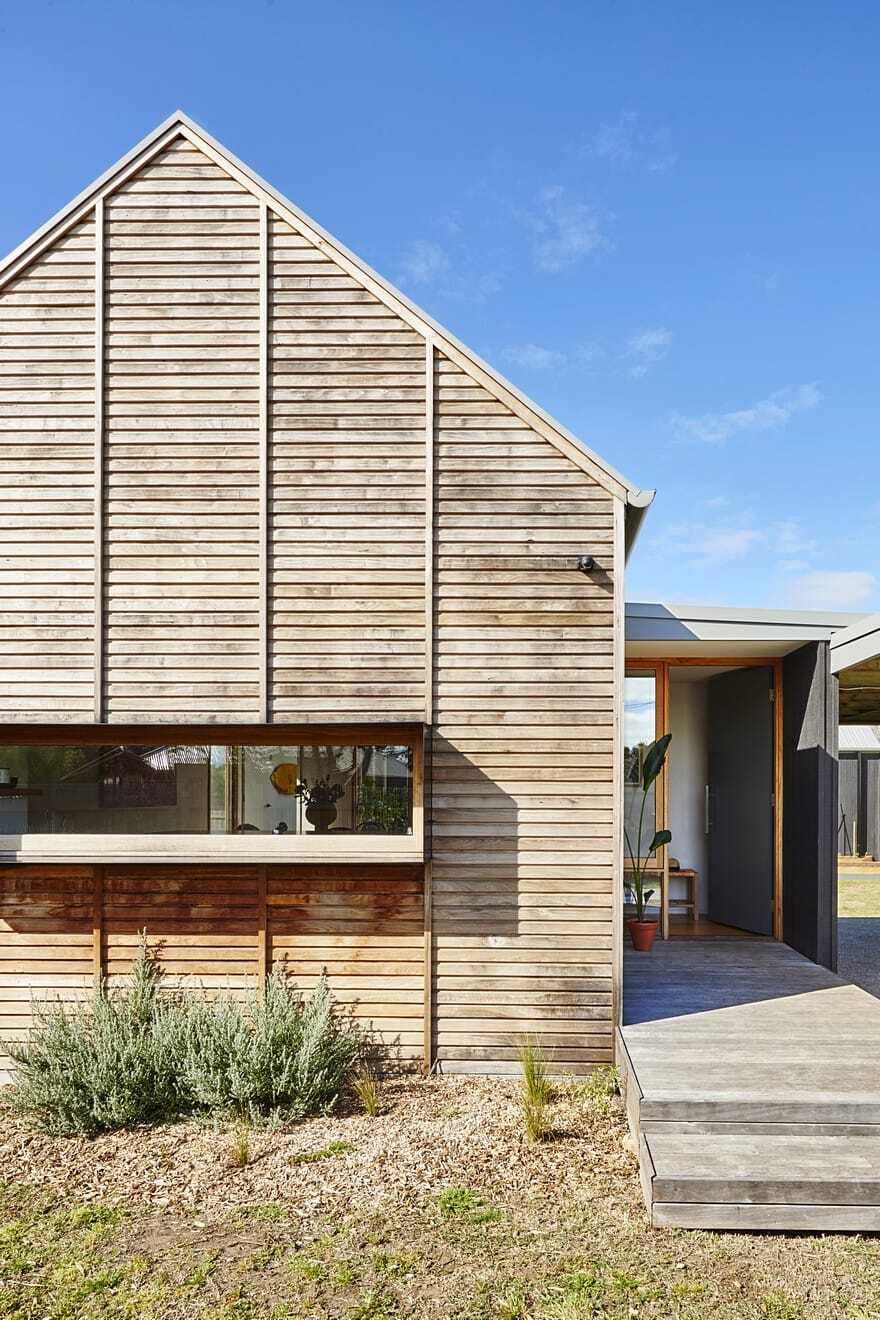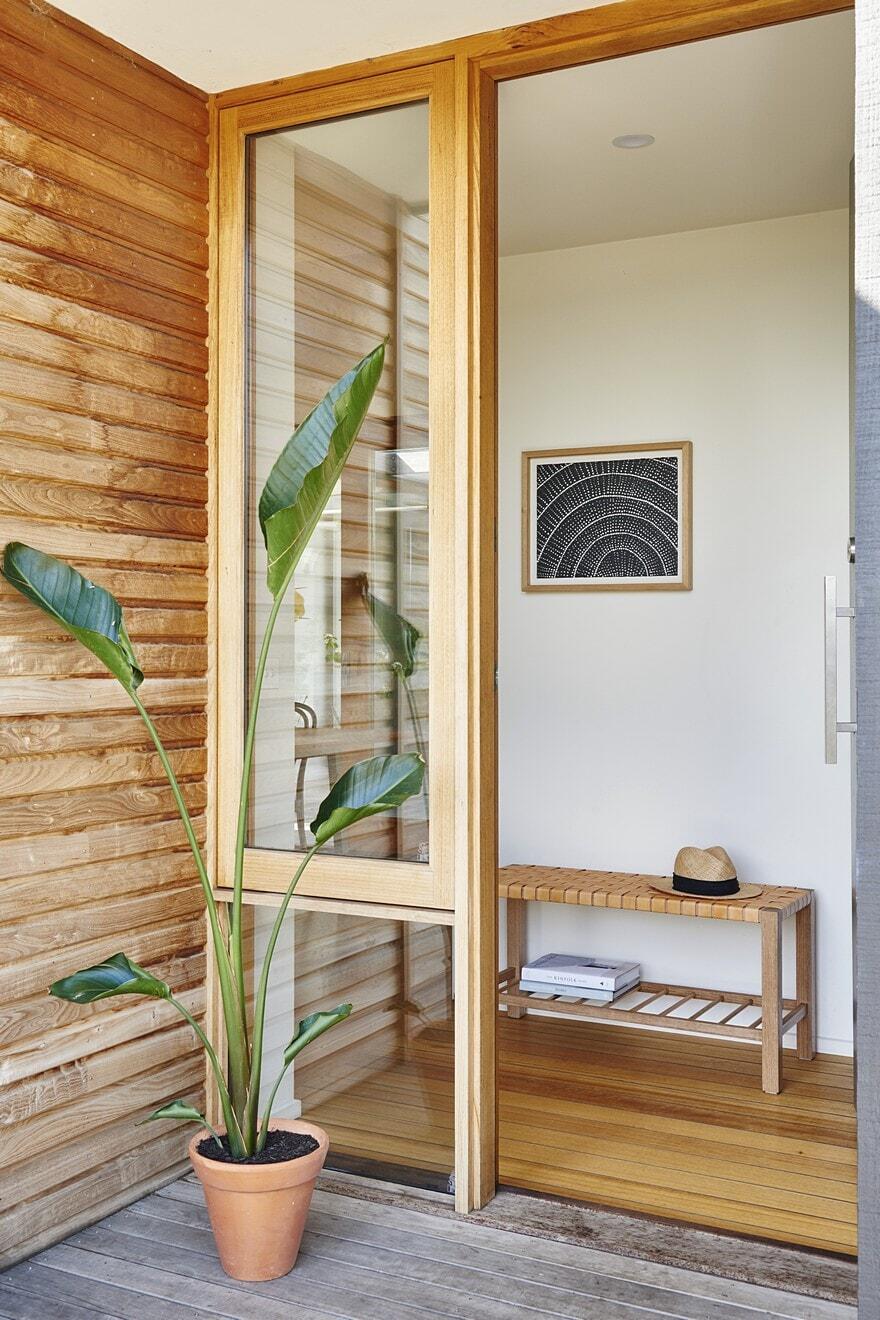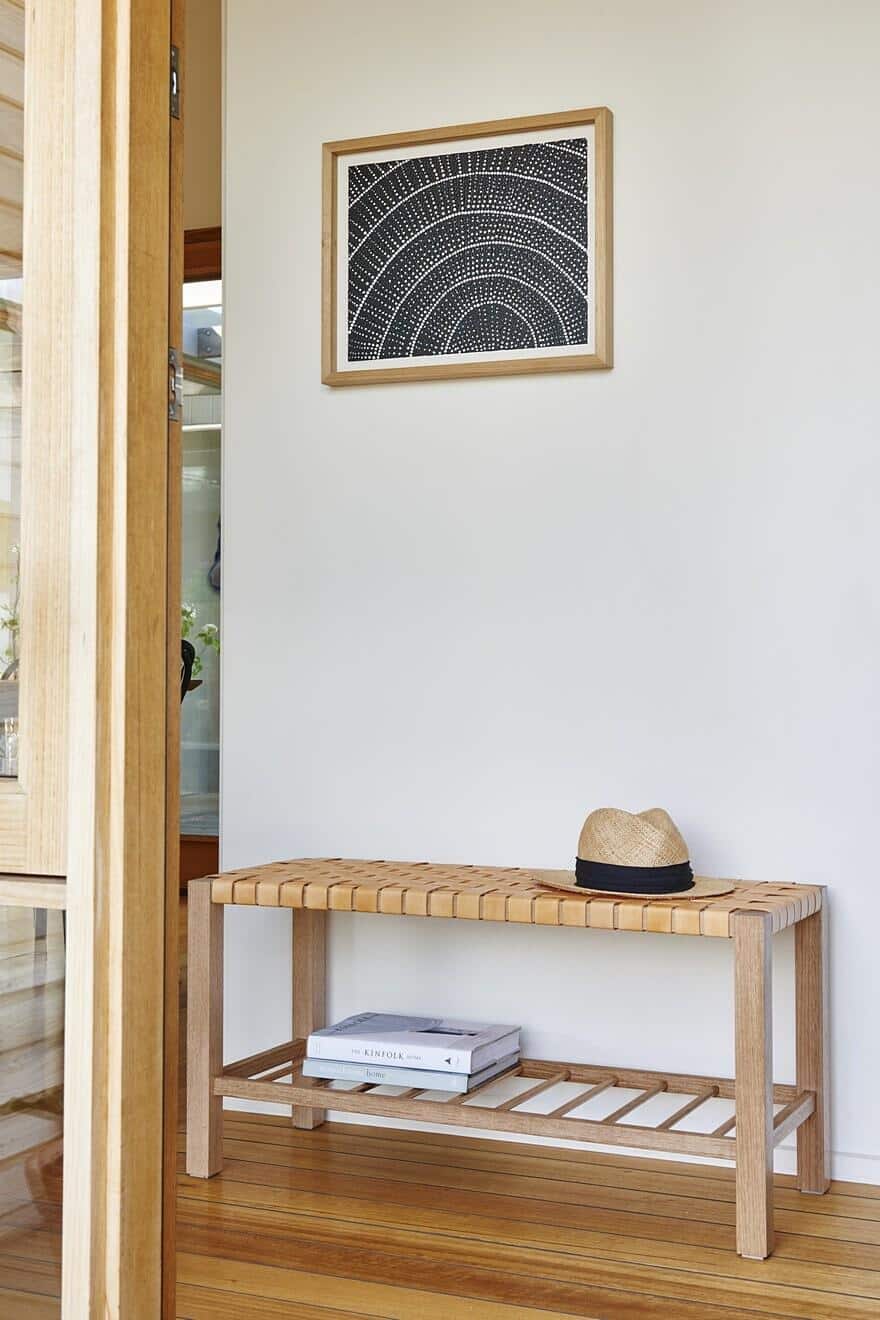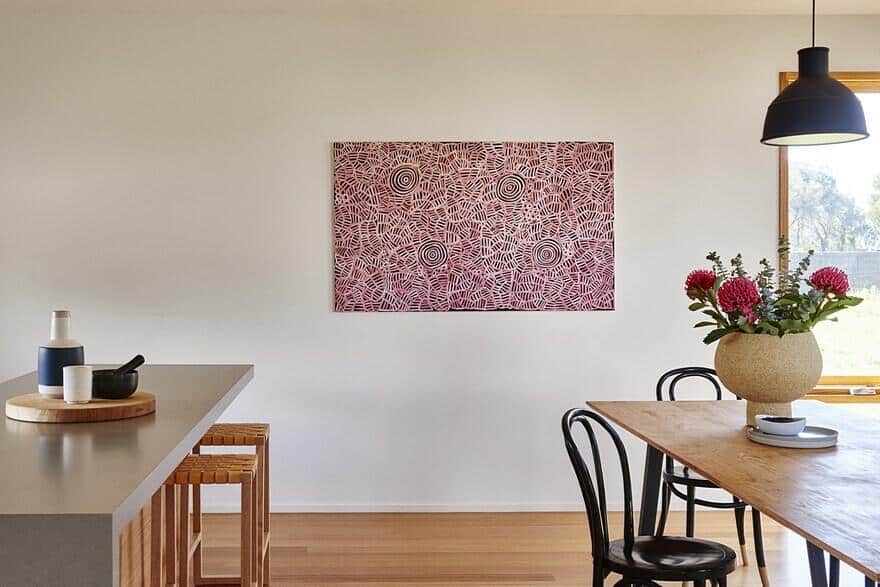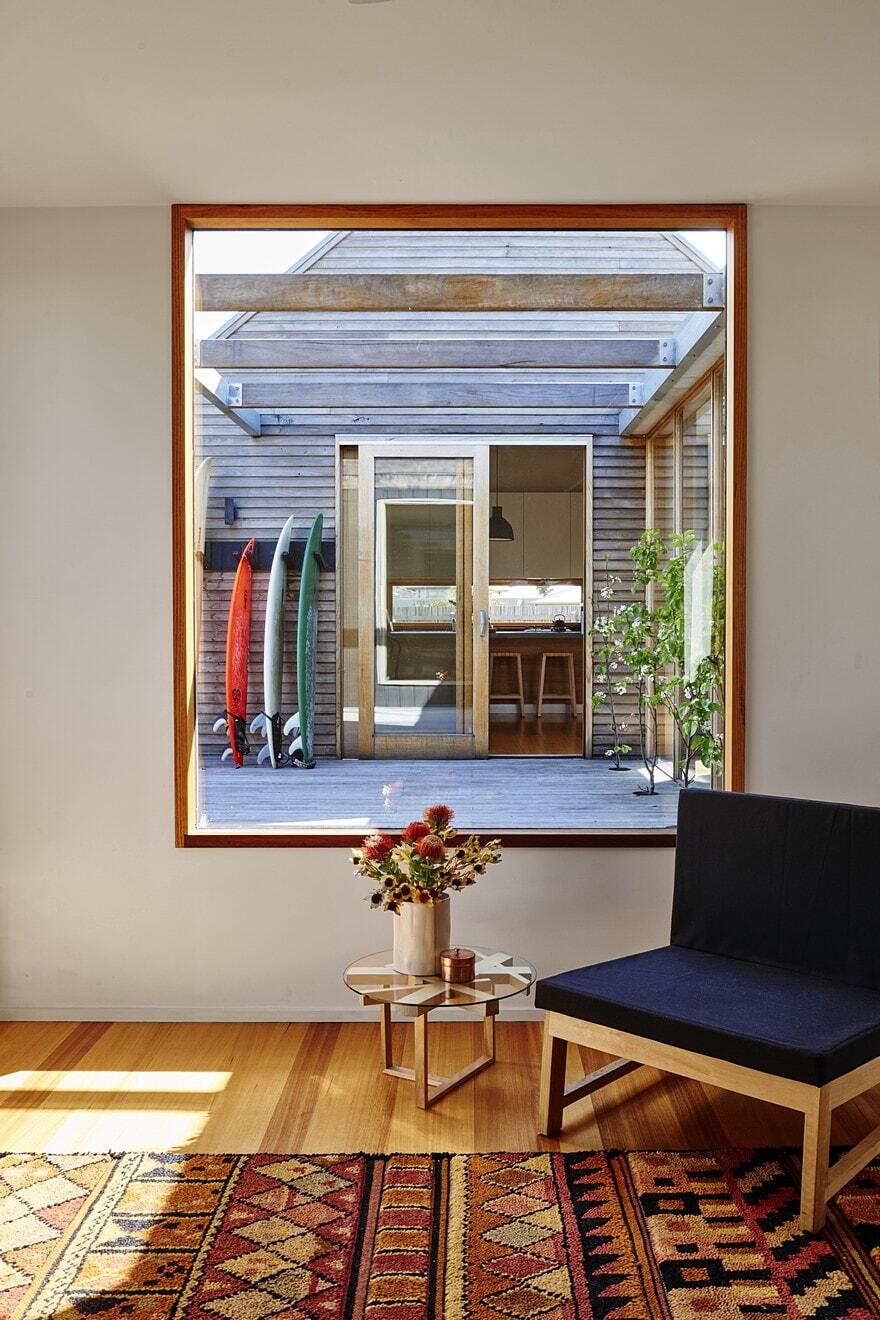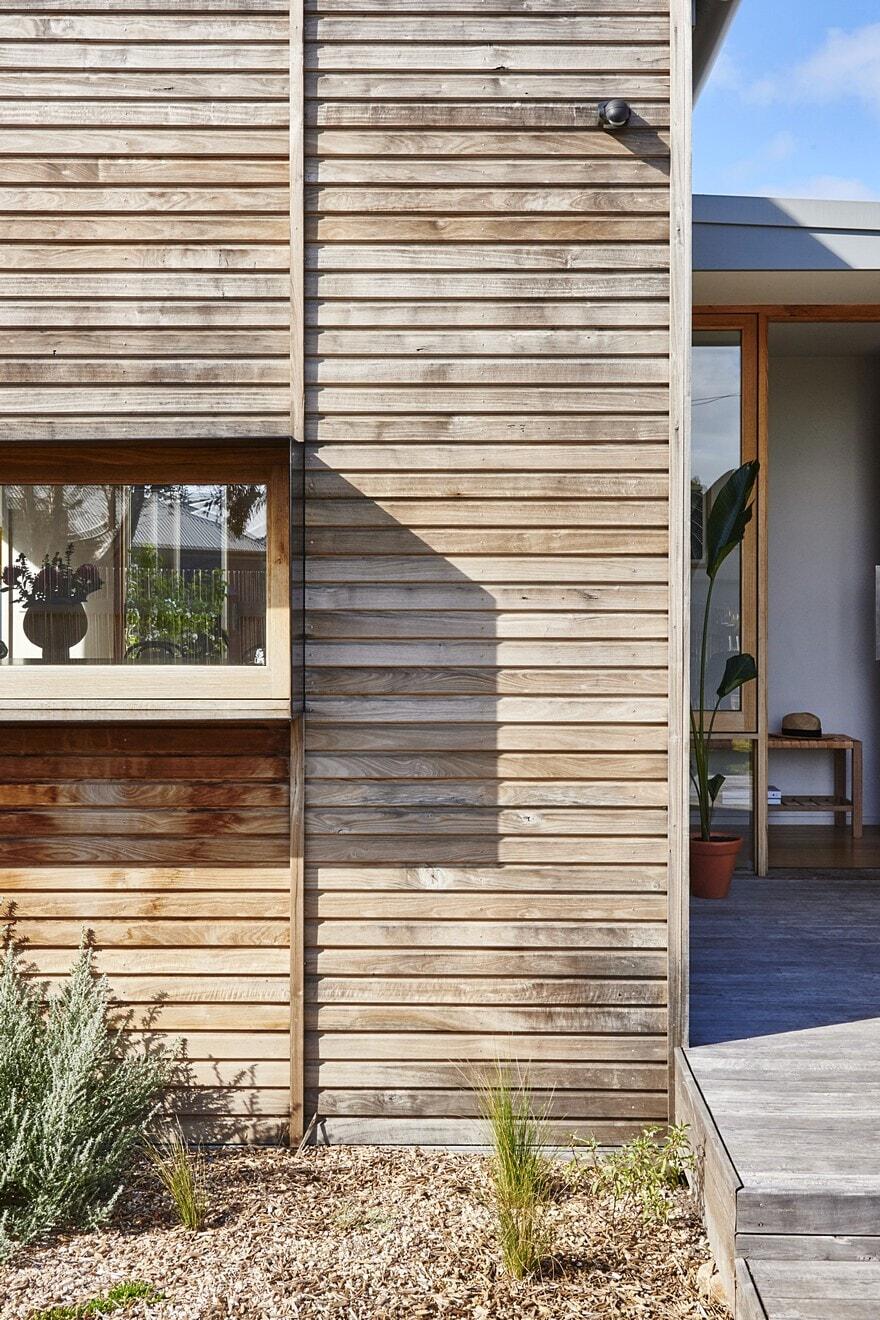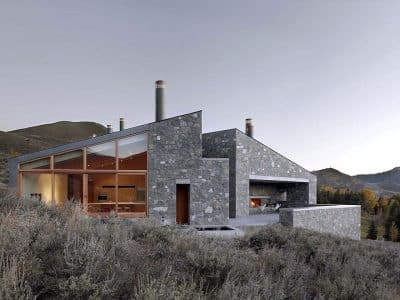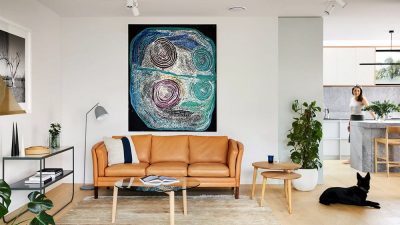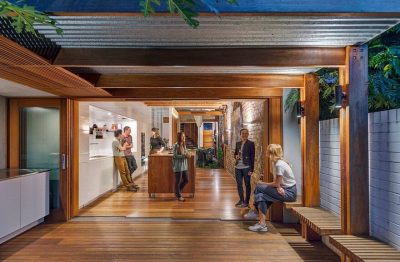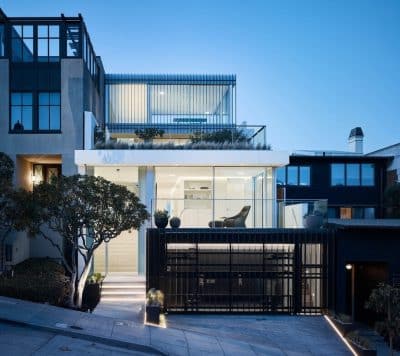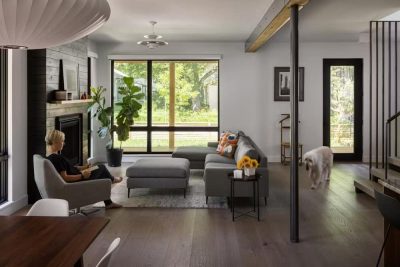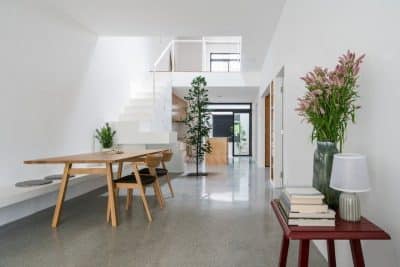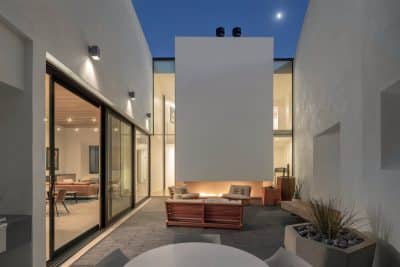Architecture: Irons McDuff Architecture
Project: Riverwalk House
Styling: Emma O’Meara
Project size: 135 m2
Site size: 505 m2
Project Budget: $320000
Location: Barwon Heads, Victoria, Australia
Photography: © Nikole Ramsay
An affordable housing solution for a final land release in the coastal town of Barwon Heads, Victoria. Located only 100 metres from the Barwon River, Riverwalk house is a simple series of gabled forms, creating a spacious home while maximising a central garden and open space for active boys.
What were the key challenges?
The block sloped somewhat towards the rear, and this resulted in some very long concrete stumps which were cut down considerably in order to not overly impeed on the rear neighbouring property. The budget was a challenge however the builder came on board during the design phase and this allowed some great planning and cost cutting prior to the build. Bushfire rating, though small, challenged the desire for a simple coastal timber dwelling. The slight elevation of the rear pavilions above ground and the sue of sugar gum cladding and NSW cypress pine windows assisted in meeting the requirement.
What are the sustainability features?
Despite some challenges often presented with timber frame and clad dwellings, with extensive insulation throughout, the house achieves an energy rating of 6.5 stars. It is a small house achieving efficiency in construction and materials as well as reducing excessive operational energy requirement, carefully located double glazed windows throughout, allow generous to light and winter sun, while maintaining protection from the heat of the summer sun. More generous openings engage with the landscape and connection to external activities. Timber cladding is sourced regenerative sugar gum, milled by a sustainable farmers co-operative. Natural timber windows are cypress pine. The solar hot water system and a large water tank services the toilets and outdoor taps.
What was the brief?
The brief was for a low budget, architecturally crafted home on a small block of 500sqm, taking advantage of the westerly orientation and need for yard space. An important requirement was for separate living areas and a small overall footprint. Rather than the current popularity of open plan living, the client wanted to separate the main kitchen/dining with the living space whilst retaining the feeling of being visually connected. This is achieved through the glass link and large glass windows between the two pavilions. Connection to the community via kitchen to street, slot window along kitchen bench allows some casual waves, (nearly Mrs Mangle like) but retaining privacy. The carport to one side allows storage for multiple ‘toys/bikes’ and completes the courtyard garden area to provide a sense of open and secure play area.
How is the project unique?
The project encapsulates two different building pavilions with a glass link connection. The full height windows and high pitched roof generate an enormous amount of sunlight, and creates a wonderfully liveable home that allows the client to work and live from.
Key products used:
The front pavilion is clad in locally sourced Sugar Gum timber, whilst the rear pavilion forming an L-shape comprises of black stained Shadowclad. The natural sugar gum provides a backdrop to the native landscaped street front. The two pavilions are connected by a glass link, separating the kitchen and dining from the living zone yet providing a clear view through to each area. The rear Shadowclad was stained black in order to recede the rear pavilion into the landscape and hero the Sugar Gum. It was also a cost-saving measure. Internally, the material palette is simple, allowing client personal expression. The kitchen benchtop is a concrete-look Ceaserstone product, and the laundry a similar colour laminate.
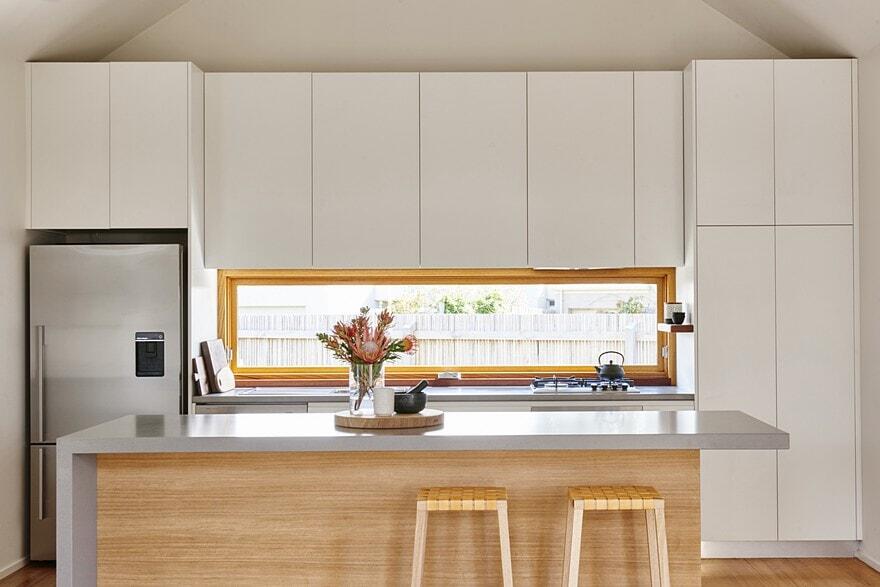
The house was originally designed for a family of three, a single parent with two young and active boys. It was important for this little household to feel a sense of security with positive connection to the community. However as time has evolved and life changes, the house has more recently catered for an extended family of six!

